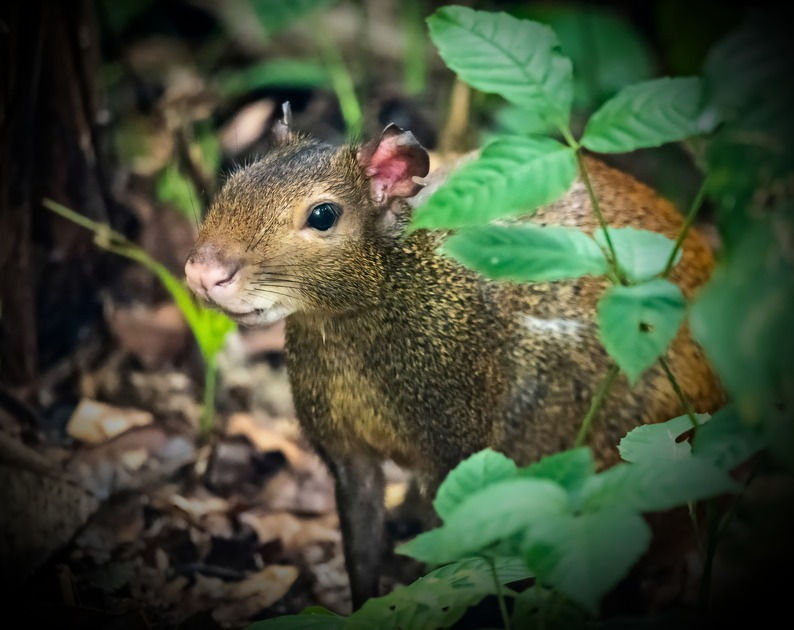🐾 Top 7 Animals You Can See in Manuel Antonio National Park, Costa Rica
- Manuel Antonio National Park
- Jun 13
- 3 min read
Updated: Jun 18
Manuel Antonio National Park, located on Costa Rica’s Pacific coast, is one of the most biologically diverse national parks in Central America. Encompassing just under 2,000 hectares of terrestrial and marine ecosystems, it is home to a remarkable variety of species across mammals, reptiles, birds, and amphibians. Its tropical rainforest, mangroves, and pristine beaches provide ideal habitats for unique wildlife encounters.
This guide highlights the top 7 iconic animals you are most likely to encounter during your visit. Understanding their natural history and behavior enriches your experience and supports responsible ecotourism.
🐒 1. White-faced Capuchin Monkey (Cebus capucinus)
The white-faced capuchin is a highly intelligent and social primate, known for its problem-solving abilities and complex social structures. These monkeys live in hierarchical troops averaging 10–20 individuals and exhibit tool use in the wild. They are omnivores, feeding on fruits, insects, small vertebrates, and bird eggs.
Ecological role: Seed dispersers and insect population controllers.
Conservation status: Least Concern (IUCN).
Best viewing spots: Along main trails and near beach edges where they forage and interact.

🦥 2. Hoffmann’s Two-toed Sloth (Choloepus hoffmanni)
This nocturnal sloth is characterized by its two claws on each forelimb and slow metabolic rate, adapted for a low-energy folivorous diet consisting mainly of leaves, fruits, and flowers. Its thick fur hosts symbiotic algae and insects, which help camouflage the animal.
Ecological role: Important for forest health by facilitating nutrient cycling through their slow digestion and leaf consumption.
Conservation status: Least Concern.
Where to find: High in the forest canopy, often detected with guide assistance.

🦥 3. Brown-throated Three-toed Sloth (Bradypus variegatus)
More diurnal than its two-toed relative, this species is easier to observe during daylight hours. It has a distinctive “smiling” face pattern and three claws on each limb. It feeds almost exclusively on leaves, digesting them slowly with a multi-chambered stomach.
Ecological role: Maintains canopy ecosystem health by selective leaf consumption.
Conservation status: Least Concern.
Habitat: Found in both primary and secondary forests within the park.

🦎 4. Green Iguana (Iguana iguana)
Green iguanas are large herbivorous lizards, sometimes reaching lengths over 1.5 meters. Their role as seed dispersers is critical for tropical forest regeneration. They are excellent swimmers, which helps them evade predators by dropping into water bodies.
Conservation status: Least Concern.
Typical habitat: Sun-exposed branches, rocks, and riverbanks.

🐦 5. Black-mandibled Toucan (Ramphastos ambiguus)
The black-mandibled toucan, also known as the black-mouthed toucan, is a striking bird with a large bill that is predominantly black with a colorful base. It is slightly larger and less brightly colored than the keel-billed toucan but equally important ecologically. This species feeds primarily on fruit, but it also supplements its diet with insects, eggs, and small reptiles. Its loud, far-carrying call often signals its presence before it is seen.
Conservation status: Least Concern.
Habitat: Humid lowland forests and forest edges.

🦝 6. Common Raccoon (Procyon lotor)
An adaptable omnivore, raccoons can thrive in diverse habitats, including areas near human settlements. In Manuel Antonio, they forage primarily at night but may occasionally be seen during the day. Visitors should avoid feeding them to prevent behavioral changes and health risks.
Conservation status: Least Concern.
Habitat: Mangroves, forest edges, and areas near beaches.

🐀 7. Central American Agouti (Dasyprocta punctata)
This medium-sized rodent is essential for tropical forest ecology, as it caches seeds and fruits underground, promoting forest regeneration. Agoutis are shy but can sometimes be spotted along trails in quieter forest areas.
Conservation status: Least Concern.
Habitat: Forest floor, secondary growth zones.

Responsible Wildlife Viewing Tips
Maintain a respectful distance from all animals to avoid stress or behavioral changes.
Avoid feeding wildlife to prevent dependency and aggressive behavior.
Use binoculars and cameras with zoom lenses to observe animals without disturbing them.
Stay on designated trails to protect fragile habitats.
Consider hiring an experienced local guide to enhance your chances of spotting wildlife and learn about conservation efforts.
Manuel Antonio National Park offers an unparalleled opportunity to observe diverse wildlife in a relatively accessible setting. By understanding the natural history and ecological roles of these iconic species, visitors can deepen their appreciation while supporting sustainable tourism.
✅ Plan Your Visit Today!
For an enriching and ethical wildlife experience, Book a Guided Tour in Manuel Antonio National Park with expert naturalists. Discover Costa Rica’s vibrant biodiversity up close and contribute to conservation efforts.



Comments